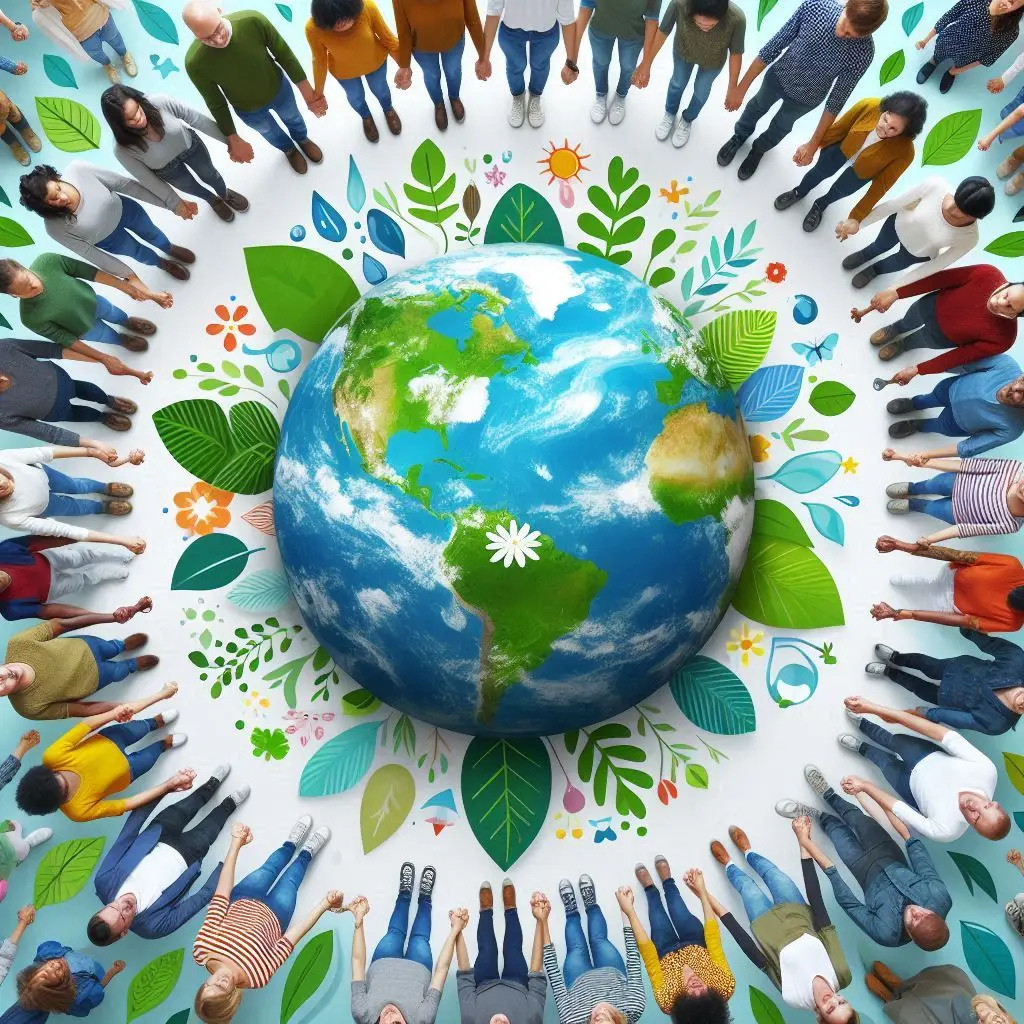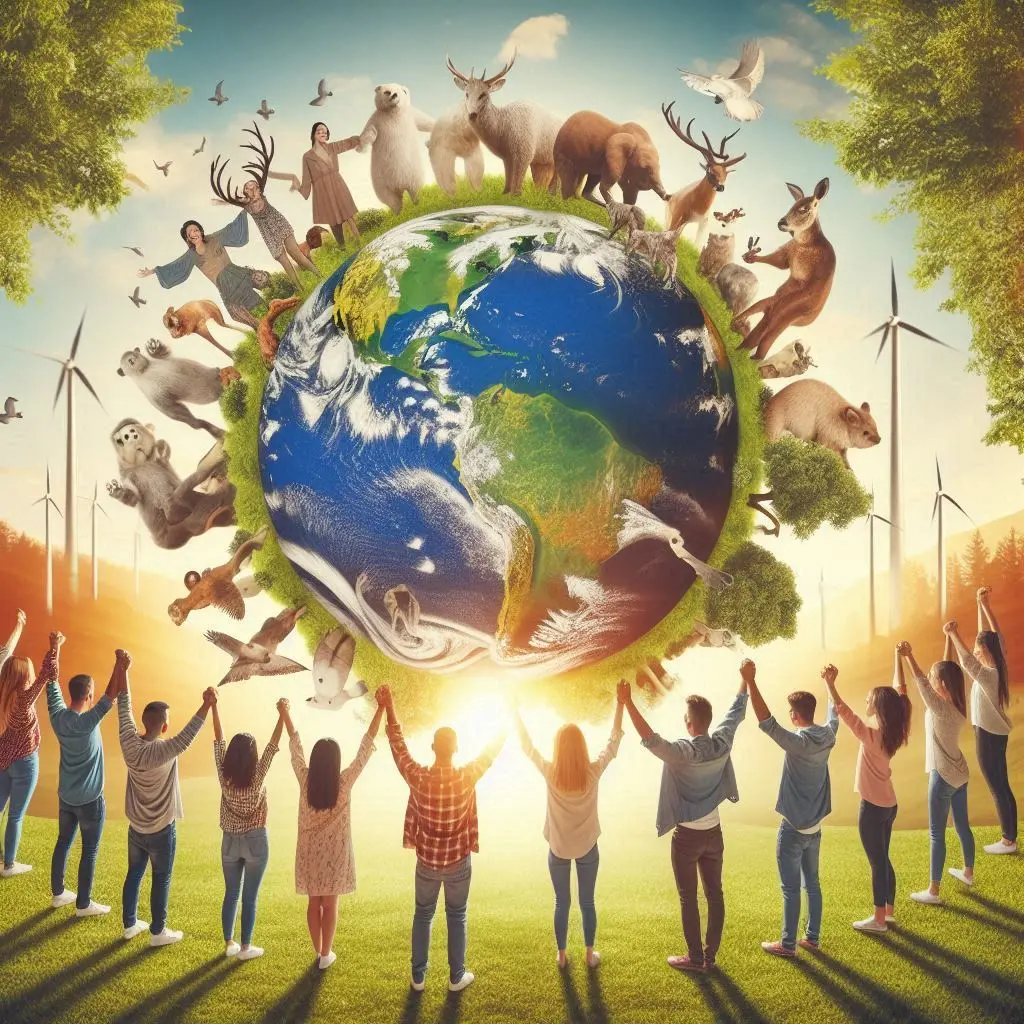Save My Planet: A Call to Action
In the vast expanse of the universe, our planet, Earth, stands as a unique beacon of life. It is a delicate tapestry woven with intricate ecosystems, diverse species, and breathtaking landscapes.
Still, this lovely world is under attack. People have brought it to the edge, and now more than ever, we need to work together to save it. This piece goes into detail about how important this goal is, the many problems we face, and what we can do to make sure a sustainable future.

Key Takeaways
- Interconnected Ecosystems: Earth’s ecosystems are intricately connected, and human activities like deforestation and pollution are disrupting this balance, leading to biodiversity loss.
- Climate Change: The burning of fossil fuels has led to global warming, causing severe weather events, rising sea levels, and shifting climate patterns. Immediate action is needed to transition to renewable energy and reduce carbon footprints.
- Pollution: Air, water, and soil pollution are major threats, affecting both the environment and human health. Reducing emissions, improving waste management, and adopting cleaner technologies are crucial.
- Individual Actions: Individuals can make a difference by reducing waste, conserving energy, supporting sustainable practices, raising awareness, and reducing their carbon footprint.
- Community Efforts: Local initiatives like community gardens, clean-up drives, and conservation projects can have a significant impact on environmental conservation.
- Government and Corporate Responsibility: Systemic change is necessary, with governments implementing environmental policies and corporations adopting sustainable business practices.
- Technological Innovations: Advances in renewable energy, waste management, and conservation technologies can drive significant progress in environmental protection.
- Education and Awareness: Raising awareness and educating people about environmental issues can inspire action and foster a culture of environmental stewardship.
- Urgency of Action: Immediate action is essential to reverse environmental damage and ensure a livable future for all. The health of our planet is directly linked to human well-being.
The Fragile Web of Life
The complexity of Earth’s ecosystems is staggering. From the dense rainforests of the Amazon to the arid deserts of the Sahara, each environment supports a myriad of life forms, each interconnected in a delicate balance. This web of life is not just a marvel of nature; it is essential for our survival. The air we breathe, the water we drink, and the food we eat all depend on the health of these ecosystems.
This equilibrium has been upset by human activity, though. Natural environments are being severely damaged by pollution, deforestation, and climate change. An alarming rate of extinction is occurring, and biodiversity is being lost at an accelerating rate. Ecosystem collapse can result from the extinction of a single species, which can set off a chain reaction. To save this delicate chain of life, we must take action right away.
The Climate Crisis
The most important issue of our day may be climate change. Global warming is the result of the exceptional amounts of greenhouse gases that have been released into the atmosphere by the combustion of fossil fuels. Sea levels will rise, extreme weather will occur more frequently, and climate patterns will change—all grave repercussions. Significant social and economic ramifications accompany these environmental shifts.
The repercussions of climate change are already being felt by communities worldwide. Farmers have erratic growing seasons, coastal communities struggle with floods, and entire areas are hit by catastrophic weather events. Global action is needed to address the climate disaster, which is a global issue. We need to switch to sustainable policies, lower our carbon footprint, and switch to renewable energy sources.
Pollution: A Silent Killer
One other serious hazard to our world is pollution. Our ecosystem is being poisoned and human health is being jeopardized by air, water, and soil pollution. The main offenders are inappropriate waste disposal, industrial activity, and agricultural practices. The effects are extensive, impacting not just the environment but also community health and well-being.
For example, every year millions of premature deaths are caused by air pollution. It even impairs cognitive function and aggravates respiratory disorders and heart problems. Conversely, water pollution taints supplies of potable water, resulting in illnesses spread through the water and upsetting aquatic environments. Both agricultural production and food safety are impacted by contaminated soil. A coordinated effort is needed to combat pollution in order to lower emissions, enhance waste management, and advance greener technology.

The Role of Individuals
Even if the obstacles we must overcome are great, each person may have an impact. Every action matters, regardless of its size. Here are a few things you can do to help preserve the environment:
- Reduce, Reuse, Recycle: Minimize waste by adopting the three Rs. Reduce your consumption, reuse items whenever possible, and recycle materials to keep them out of landfills.
- Conserve Energy: Use energy-efficient appliances, switch to renewable energy sources, and be mindful of your energy consumption. Simple actions like turning off lights when not in use can make a big difference.
- Support Sustainable Practices: Choose products that are sustainably sourced and produced. Support companies that prioritize environmental responsibility.
- Educate and Advocate: Raise awareness about environmental issues and advocate for policies that promote sustainability. Join local environmental groups and participate in community initiatives.
- Reduce Your Carbon Footprint: Opt for public transportation, carpool, or use bicycles instead of driving. Reduce air travel and consider offsetting your carbon emissions.
The Power of Community
Communities are essential to the preservation of the ecosystem. Local efforts may make a big difference, and group efforts can lead to real change. To save the environment, communities can organize conservation efforts, clean-up campaigns, and community gardens, to name a few.
For example, community gardens support sustainable agriculture and give locals access to fresh vegetables. They also work as centers of education, enlightening the public about the value of biodiversity and environmentally friendly agricultural methods. Cleanup campaigns lessen pollution and enhance the standard of living for locals by collecting trash from public areas. Reforestation initiatives are examples of conservation programs that support climate change mitigation and natural habitat restoration.

The Role of Governments and Corporations
While individual and community actions are essential, systemic change is necessary to address the root causes of environmental degradation. Governments and corporations have a significant role to play in this regard.
Environmental protection laws must be put into effect and upheld by the government. This covers laws pertaining to land use, waste management, and emissions. Positive change can also be sparked by incentives for conservation, sustainable agriculture, and renewable energy. Given that environmental problems frequently cut over national boundaries, international collaboration is essential.
Conversely, corporations need to implement sustainable business methods. This include cutting down on waste, procuring resources ethically, and lowering their carbon impact. Initiatives pertaining to corporate social responsibility (CSR) may also aid in environmental preservation. Businesses that prioritize sustainability may improve their brand and revenue while also protecting the environment.
Technological Innovations
In the battle to save our world, technology may be a very useful friend. Innovations in conservation, waste management, and renewable energy can propel substantial advancements. Fossil fuels have clean, sustainable alternatives in the form of wind and solar energy. Technological developments in batteries are increasing the viability and accessibility of renewable energy.
trash-to-energy systems and recycling robots are two examples of how technology is revolutionizing trash management. These developments can encourage a circular economy and lessen the quantity of garbage that is dumped in landfills. Drones and satellite photography are two examples of conservation technology that are improving our capacity to observe and safeguard natural areas.
Education and Awareness
The foundation of environmental protection is education. By bringing attention to the significance of preserving our planet, we may motivate people and groups to take initiative. School curricula have to incorporate environmental education, and public awareness initiatives might reach a larger audience.
Educational programs can also provide individuals with the information and abilities needed to make sustainable decisions. On subjects like waste management, sustainable agriculture, and renewable energy, workshops, seminars, and online courses may offer insightful knowledge. We can build a more sustainable future by encouraging an attitude of environmental responsibility.

The Urgency of Action
TAlthough there are many obstacles in our way, we must move quickly. Reversing the harm will become more challenging the longer we wait. In order to save our world for future generations, we must act today.
This call to action is about guaranteeing a future that can be lived in by all, not merely about protecting the environment. Our personal well-being is intrinsically tied to the condition of our world. A steady climate, clean water, and air are essential to human life. We are protecting our own future by acting to rescue the earth.
Conclusion
Everyone, including people, communities, governments, and businesses, needs to work together to save our world. The problems are difficult, but they can be solved. It's possible to make a change if we use safe methods, back new technologies, and spread information.
Currently is the time to move. We need to work together to protect the fragile web of life, stop climate change, and clean up the environment. We can make the world a better place by using the power of community and technology. Let us teach and motivate the next generation to take care of the earth. We can save the world and make sure everyone has a good future if we all work together.